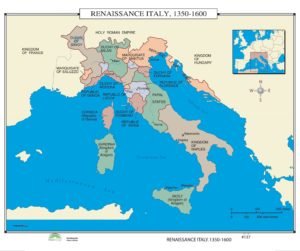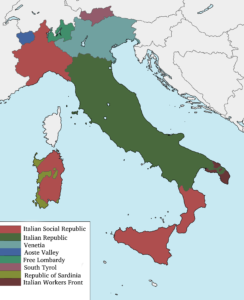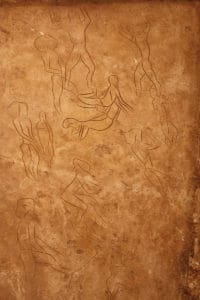
By the mid-19th century, rising Italian nationalism and calls for independence from foreign control led to a period of revolutionary political upheaval. After centuries of foreign domination and political division, Italy was almost entirely unified in 1861, establishing the Kingdom of Italy as a great power. From the late 19th century to the early 20th century, Italy rapidly industrialized, mainly in the north, and acquired a colonial empire, while the south remained largely impoverished and excluded from industrialization, fueling a large and influential diaspora. Despite being one of the four main allied powers in World War I, Italy entered a period of economic crisis and social turmoil, leading to the rise of the Italian fascist dictatorship in 1922. Participation in World War II on the Axis side ended in military defeat, economic destruction and the Italian Civil War. Following the liberation of Italy the country abolished their monarchy, established a democratic Republic and enjoyed a prolonged economic boom, becoming a highly developed country.

Today, Italy is considered to be one of the world’s most culturally and economically advanced countries, with the world’s eighth-largest economy by nominal GDP (third in the European Union), sixth-largest national wealth and third-largest central bank gold reserve. It ranks very highly in life expectancy, quality of life, healthcare, and education. The country plays a prominent role in regional and global economic, military, cultural and diplomatic affairs; it is both a regional power and a great power, and is ranked the world’s eighth most-powerful military. Italy is a founding and leading member of the European Union and a member of numerous international institutions, including the UN, NATO, the OECD, the OSCE, the WTO, the G7, the G20, the Union for the Mediterranean, the Council of Europe, Uniting for Consensus, the Schengen Area and many more. The country has long been a global centre of art, music, literature, philosophy, science and technology, and fashion, and has greatly influenced and contributed to diverse fields including cinema, cuisine, sports, jurisprudence, banking and business. As a reflection of its cultural wealth, Italy is home to the world’s largest number of World Heritage Sites (55), and is the fifth-most visited country.
History:
Prehistory and Antiquity:
Thousands of Paleolithic-era artifacts have been recovered from Monte Poggiolo and dated to around 850,000 years before the present, making them the oldest evidence of first hominins habitation in the peninsula. Excavations throughout Italy revealed a Neanderthal presence dating back to the Palaeolithic period some 200,000 years ago, while modern Humans appeared about 40,000 years ago at Riparo Mochi. Archaeological sites from this period include Addaura cave, Altamura, Ceprano, and Gravina in Puglia.

The Ancient peoples of pre-Roman Italy – such as the Umbrians, the Latins (from which the Romans emerged), Volsci, Oscans, Samnites, Sabines, the Celts, the Ligures, the Veneti, the Iapygians and many others – were Indo-European peoples, most of them specifically of the Italic group. The main historic peoples of possible non-Indo-European or pre-Indo-European heritage include the Etruscans of central and northern Italy, the Elymians and the Sicani in Sicily, and the prehistoric Sardinians, who gave birth to the Nuragic civilisation. Other ancient populations being of undetermined language families and of possible non-Indo-European origin include the Rhaetian people and Cammuni, known for their rock carvings in Valcamonica, the largest collections of prehistoric petroglyphs in the world. A well-preserved natural mummy known as Ötzi the Iceman, determined to be 5,000 years old (between 3400 and 3100 BCE, Copper Age), was discovered in the Similaun glacier of South Tyrol in 1991.
